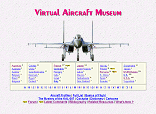 |
SHORT BROTHERS PLC |
 |
| UK |
Founded by brothers Horace, Eustace and Oswald Short in November 1908 as Short Brothers Ltd., though Eustace and Oswald had made balloons since 1898. At Leysdown, Isle of Sheppey, completed first biplane, construction of which had begun at Battersea, London, in 1909. Received order for six Wright biplanes, in one of which Hon. C. S. Rolls made first return crossing of English Channel. Company pioneered multi-engine and multipropeller types, and tractor biplanes with folding wings for naval use. Did more to aid development of early naval flying than any other British firm. New works at Rochester, Kent, started 1914. Most famous type was 184 torpedo-bomber, which was used at Battle of Jutland and was also the first to sink a ship at sea. During First World War established airship works at Cardington, Bedfordshire. After First World War developed Cromarty flying-boat but diversified in other fields. Gave special attention to all-metal aircraft (Silver Streak of 1920 and derivatives) and concentrated later on large civil and military flying-boats (Singapore biplane series for RAF from 1926; Calcutta and Kent for Imperial Airways). Six-engined Sarafand of 1936 was then largest British flying-boat. Wing form developed for Scion and Scion Senior monoplanes used for famous fleet of Empire flying-boats in 1936, for equally-famous Sunderland military development; also on Short-Mayo composite aircraft and Stirling four-engined monoplane bomber. Jointly established Short and Harland Ltd. in 1936 with shipbuilder Harland & Wolff (see previous entry); became British Government run 1943, leading to integration of Short Brothers (Rochester & Bedford) Ltd. and Short and Harland into Short Brothers and Harland Ltd. in 1947 (see entry above). Name Short Brothers Ltd. readopted June 1977, but current name Short Brothers PLC, as part of Bombardier Aerospace Group since 1989 (see Bombardier Inc.) and operating three principal business units, as Aerospace producing aircraft components and engine nacelles, Missile Systems, and Belfast City Airport. Shorts 360 36- passenger transport (first flown June 1981) followed Shorts 330/Sherpa, with final complete aircraft built by Shorts becoming the Tucano for the RAF, a variant of the EMBRAER turboprop trainer.
|
 All the World's Rotorcraft |
